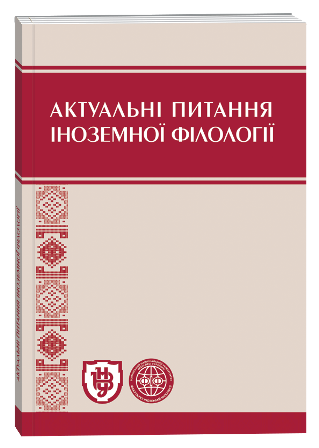CONTENT ANALYSIS OF 2012 USA PRESIDENTIAL CANDIDATES’ ELECTION SPEECHES
Keywords:
content analysis, term, terminology, political discourse, quantitative analysisAbstract
Political discourse has become an integral part of not only political sphere but social life in general. Political leaders improve the means of influencing the target audience while journalists and experts carefully analyze implementation of their communicative strategies and their effectiveness. The election speeches of the 2012 US presidential candidates are of considerable interest for linguistic research on the prospect of the analysis of the implementation of traditional strategies by representatives of different political camps under the conditions of difficult economic, political, and social situation in the country at the election period. The 2012 elections were held in a difficult economic, political and social situation in the country. Under such conditions, candidates needed to make great efforts to find the right balance between their historically specific political strategy and new challenges faced by the American people in order to keep their traditional supporters and get opponents’ voters. Candidates understood that effectiveness in the communication process with their electorate would largely influence on the final result. The article analyzes thematic content and consecutive terminology in the election speeches of the Republican and Democratic Party presidential candidates in 2012. The content analysis of lexical units has defined the most popular topics in the speeches of every political camp. The priority topics during the 2012 presidential campaign were the economy, politics, military issues, education and health care. Quantitative results of terminological units combined with contextual analysis of their usage in speeches have demonstrated similarities, differences, and the dynamics of the functioning of these units in the election speeches of US presidential candidates. The results differ not only in quantitative parameters but also in the way those lexical units function within the correspondent thematic clusters. Contextual analysis of terminological units has demonstrated the correlation between traditional values of every political party and current situation in the country.
References
Amadeo, Kimberly. 2019. “US Economy 2012: Summary and Critical Events”. The Balance. Accessed February 26, 2019. https://www.thebalance.com/u-s-economy-2012-3305742.
Gentzkow, M., Shapiro, M., and Taddy, M. 2019. “Measuring group differences in high-dimensional choices: method and application to congressional speech”. Stanford University. Accessed February 9, 2019. http://web.stanford.edu/~gentzkow/research/politext.pdf.
Herrnson, Paul. 2012. Congressional Elections: Campaigning at Home and in Washington. Washington, D.C.: CQ; London: SAGE.
Iyengar, Shanto. 2005. “Speaking of Values: The Framing of American Politics”. The Forum 3, no. 3. Accessed February 9, 2019. https://doi.org/10.2202/1540-8884.1093.
Owen, G., Goodliffe, J., Herrnson, P., and Patterson, K. 2003. “Agenda setting in congressional elections: the impact of issues and campaigns on voting behavior”. Political research quarterly 56(4): 419–430. Accessed January 13, 2019. https://www.jstor.org/stable/3219803?read-now=1&seq=1#page_ scan_tab_contents.
Power, Samanta. 2008. “The Democrats and National Security”. The New York review of books. Accessed February 2, 2019. https://www.nybooks.com/articles/2008/08/14/the-democrats-national-security/.
Sulkin, T., Moriarty, C., and Hefner, V. 2007. “Congressional Candidates’ Issue Agendas On- and Off-line”. The International Journal of Press/Politics 12(2): 63–79.
“The American Presidency Project”. Accessed September 14, 2018. http://www.presidency.ucsb.edu.







